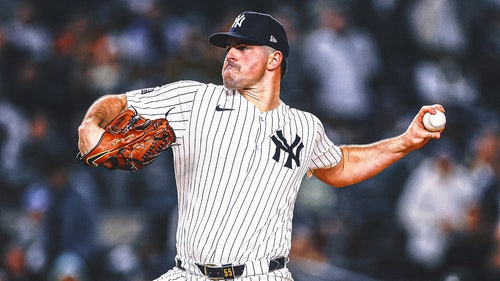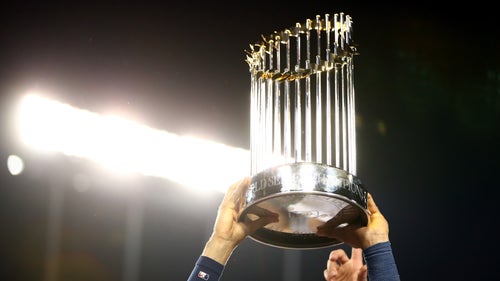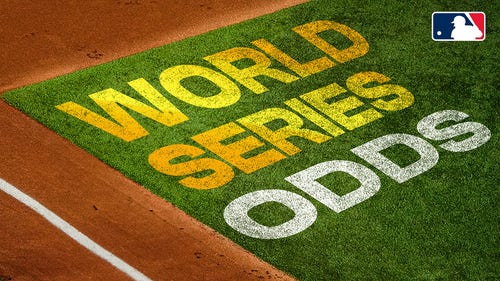
Yost's managerial decisions make for extra-entertaining World Series
After Friday's 3-2 victory, the Royals lead the Giants, two games to one, in a thoroughly entertaining World Series, and I’m inspired to write a brief letter.
Dear baseball gods,
Can Ned Yost manage in the World Series every year?
Please?
Sincerely,
All of us
Oh, this is too much fun. I don’t always agree with his in-game moves, and, in all honesty, I prefer it that way. There are two sports going on right now: Major League Baseball and the Ned Yost Madcap Logic Puzzle.
As the middle and late innings of Game 3 unfolded Friday night, I actually turned my notebook to a fresh page and began listing all the queries Yost would face if the Royals’ 3-0 lead disintegrated into a defeat.
Valid questions, all, but Yost could answer them from the halo of a hard-earned 3-2 win.
In fact, he could have parried all of his critics’ questions with a single response.
Including the postseason, we’re now 70-4 when leading after six innings, 77-1 when leading after seven, and 84-1 when leading after eight. I know what I’m doing.
He didn’t say that, of course, but it would have been entirely accurate if he did. We can calculate increases and decreases in the Royals’ win probability after each move — particularly the head-scratchers — but we must acknowledge that Yost has more information than the rest of us. He knows his players. He’s taken a team that hit the fewest home runs in baseball this year — and has zero World Series rings on its active roster — to within two wins of the Commissioner’s Trophy. Apparently, he’s familiar with the concept of maximizing one’s competitive advantage.
Yost knows, for example, that Herrera can get more than three outs if needed (as in Games 2 and 3), that Wade Davis is best when throwing only one inning (as in all but six of his appearances this year), and that rookie Brandon Finnegan can handle the pressure of the tying run on base in a World Series game (two up, two down, in the seventh).
Yost’s most questionable decision in Game 3 was allowing Guthrie to bat for himself in the sixth inning of what was then a 1-0 game. Sure, Guthrie had thrown only 67 pitches to that point. But Yost already had decided he was going to remove Guthrie in the bottom of the sixth at the first sign of trouble. “My mindset was I’m not getting beaten in the sixth inning with the bullpen that I’ve got,” Yost said later. “I just wasn’t going to take any chances.”
So if Yost was prepared to lift Guthrie after only two more hitters — which is precisely what happened — then why not hit Butler for Guthrie in the top of the sixth? Had he done that, the Royals might well have added more than the two runs they scored in that inning, thus easing the bullpen’s burden for the remainder of the night.
As for Questions 2 through 5 above ... Yost could explain his decisions with the very same quote: Once his team held a 3-0 (and even 3-2 lead) in the sixth inning, he wasn’t going to concern himself with double-switching or pinch hitting in an effort to add runs. Read those words again: “I’m not getting beaten in the sixth inning with the bullpen that I’ve got.” With Herrera, Finnegan, Davis, and closer Greg Holland for the end of the game, Yost figured he already had all the runs he needed. And he was right.
So, no, he didn’t want to double-switch when Herrera entered the game, which would have meant subbing Jayson Nix for Mike Moustakas or Butler for Eric Hosmer. Either would have left the Royals with an inferior late-inning defense, and why would the Royals do that? They have built their identity on protecting leads with overwhelming relievers and airtight defense.
For all the late-inning intrigue, we shouldn’t lose sight of the equally crucial decisions Yost made earlier in the day.
— He resolved to play his best defensive outfield in AT&T Park’s vast, often vexing expanse. That meant a starting spot for Jarrod Dyson over Nori Aoki, with Dyson in center and Lorenzo Cain in right. Yost was rewarded almost immediately, with superb catches by Cain to end the first and second innings on plays Aoki probably wouldn’t have made.
— The National League rules forced Yost to use a different lineup for the first time since Sept. 20 — more than one month ago. In making a series of adjustments, Yost put Alex Gordon in the No. 2 spot for the first time since May 11 ... of 2012. The result: Gordon crushed a run-scoring double to center field.
— When Giants manager Bruce Bochy inserted Javier Lopez to face Hosmer in the sixth inning, Yost could have pinch hit Butler to wipe out the lefty-lefty matchup. (Butler would have remained in the game at first base.) Instead Yost stuck with Hosmer, who delivered the eventual game-winning single after an 11-pitch at-bat.
All managers make controversial in-game decisions, but Yost’s are magnified because of the extreme and often inexplicable fashion in which he defies the game’s growing statistical orthodoxy. If anything, his moves could be subject to even greater criticism as the Series wears on — particularly with Herrera’s Game 4 availability in doubt after a heavy workload in the past two games. (As a result, Yost may need to count on Jason Frasor in the sixth and possibly seventh inning Saturday night in relief of left-hander Jason Vargas.)
We’re welcome to disagree with Yost, as I rather enjoy doing. But he deserves our respect — and admiration. He knows things about his players that we don’t. He also knows how to lead underdogs to a 10-1 record in the postseason, two wins from a champagne-soaked legacy.








